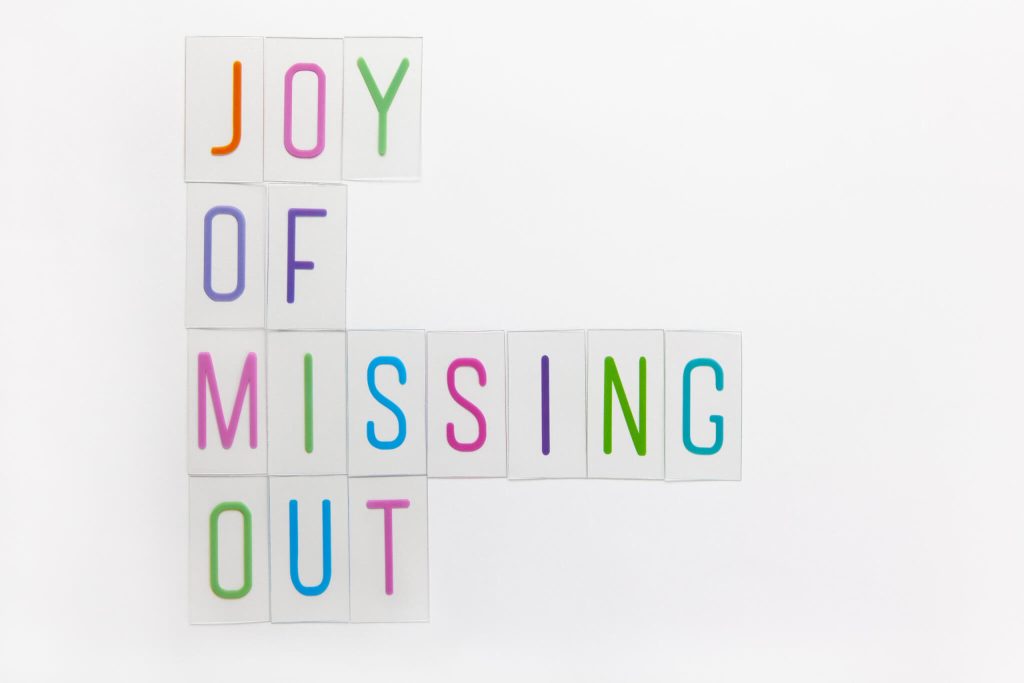
Blog
From FOMO to JOMO: How Marketing is Tapping Into the Joy of Missing Out
The evolution from the Fear of Missing Out (FOMO) to the Joy of Missing Out (JOMO) signals a profound shift in consumer behaviour.
Understanding the Shift: From FOMO to JOMO
For years, FOMO has driven marketing campaigns, leveraging consumers’ anxiety about missing out on limited-time offers, exclusive events, or experiences. These tactics played on urgency and scarcity to encourage immediate action.
However, as digital saturation and constant connectivity have led to fatigue, JOMO has emerged as a counter-movement. It encourages people to disconnect from the noise, embrace slower, more intentional living, and focus on their well-being. This cultural shift challenges marketers to move beyond urgency-driven strategies to approaches that align with the consumer’s desire for authenticity, balance, and value.
Implications for Marketing Strategies
As JOMO becomes more prevalent, consumers are engaging with content on their own terms, seeking experiences that feel personal and meaningful. To connect with this mindset, marketers must adapt their approach:
- Quality Over Quantity
Bombarding audiences with constant notifications and excessive content risks alienating them. Instead, prioritising fewer but higher-quality messages that add genuine value respects their time and builds trust. A thoughtful, less-is-more approach creates deeper connections and avoids overwhelming already fatigued audiences. - Personalisation and Relevance
With consumers becoming more selective about what they engage with, personalised marketing is critical. By using data analytics to tailor messages to individual preferences, brands can ensure their content feels relevant and valuable, increasing the likelihood of engagement even amidst reduced online interactions. - Promoting Mindfulness and Well-being
Campaigns that support consumers’ desire for balance and mindfulness can resonate strongly. For example, encouraging screen-free activities, offering flexible content consumption options, or aligning messages with wellness themes can foster deeper emotional connections.
Strategies to Embrace JOMO in Marketing
To successfully tap into the JOMO mindset, marketers can employ the following strategies:
- Authentic Storytelling
Move away from hyperbolic and fear-inducing messages, focusing instead on narratives that reflect real-life experiences and values. Authenticity builds trust and resonates with audiences seeking genuine connections. - Creating Pull-Value Content
Develop content that naturally attracts consumers by being informative, entertaining, or genuinely useful, rather than relying on persistent promotional pushes. This approach respects the autonomy of the audience, fostering voluntary engagement and deeper loyalty. - Encouraging Digital Detoxes
Paradoxically, encouraging disconnection can strengthen brand affinity. For example, a wellness brand might offer advice on reducing screen time or host events that promote mindfulness and intentional living. Showing empathy for the consumer’s needs builds trust and demonstrates a brand’s understanding of their priorities.
The JOMO Opportunity
The shift from FOMO to JOMO reflects a broader cultural movement toward intentional living and digital mindfulness. For marketers, this evolution isn’t just a challenge—it’s an opportunity to build more meaningful and lasting relationships with audiences by aligning with their values and needs.
Are you ready to embrace the JOMO mindset in your marketing? Let’s explore how we can help your brand foster deeper connections and drive long-term success.
Let’s Talk.
